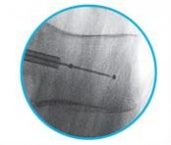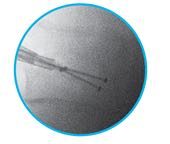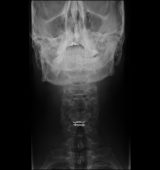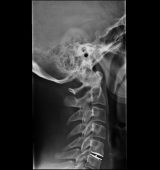These are some of the pathologies that we deal with effectively in our interventions and treatments.
The degenerative alterations of the cervical spine are a series of pathologies that affect the intervertebral disc, vertebrae and ligaments, usually due to the passage of time although, occasionally, it may be caused by trauma. The prevailing symptomatology is pain in the cervical spine and shoulders that may or may not be associated with radicular pain.
The degenerative alterations of the lumbar spine are a series of pathologies that usually affect the intervertebral disc, vertebrae and ligaments. Due to the passage of time, the intervertebral discs become dehydrated, lose height and also their biomechanical characteristics, all that may evolve (o frequently evolving) in different pathologies.
Spinal fractures occupy an important place in the universe of the most incapacitating and severe traumatic acute injuries of the human body. Road traffic injuries, work accidents and increased exposure to risk in extreme and (violent) contact sports have increased the number of these fractures.
Fractures can affect different parts of the vertebrae and cause instability; they can be of several types, produce pain and can cause other pathologies and different degrees of neurological affectations.
The disc herniation can be defined as the displacement of the intervertebral disc beyond the margins of the vertebral body. When a disc ring becomes weaker and breaks, it allows the “soft stuffing” to come out. The part that comes out can squeeze one of the nerves that leave the marrow, causing pain in the area of the leg that belongs to that nerve, weakness in certain muscles and tingling or numbness.
There are several techniques for the treatment of herniated disc: the minimally invasive surgery for lumbar discectomy, endoscopic surgery of the lumbar spine, if performed in appropriate patients with a correct surgical indication and once the conservative treatments are exhausted, it is demonstrated that it has associated a high percentage of success.
The stenosis of the lumbar canal originates from an abnormal narrowing of the spinal osteon-ligamentous anatomical structures of the canal, lateral recesses or intervertebral foramina. This narrowing can affect one or more levels and can affect the whole or a part of the canal. The ECL etiology is closely correlated with the lumbar degenerative process and is classified as congenital or developmental, acquired and combined.
The clinical symptomatology of this process is characterized by repeated episodes of low back pain and radiating pain to the lower extremities, in the form of neurogenic claudication or radiculopathy.
The pain of the spine column is a very common problem in the adult population and will affect 80% of the population at some time in their life. It is one of the most frequent causes of consultation and one of the main causes of sick leave. It negatively influences the patient’s habitual life, since it significantly affects their personal, family and social environment. It has a multifactorial cause.
The approach to its treatment is multidisciplinary, the cooperation of the patient is indispensable and, in cases where the usual conservative treatments are not effective, the patient can benefit from minimally invasive non-surgical techniques.
Orthopaedic surgery and traumatology has evolved steadily. The development of technology and innovations have made surgery a more complex act in which less aggression predominates over the patient through innovative minimally invasive techniques and with a short hospital stay.
Arthroscopic surgery and traumatology are the techniques that have evolved the most within musculoskeletal pathology, with the aim of early recovery. The purpose is to provide comprehensive assistance in a holistic and multidisciplinary manner.

Both techniques are indicated in the treatment of vertebral fractures. Balloon Kyphoplasty is a vertebral reinforcement technique that consists of creating a cavity inside the fractured vertebra and filling it with cement, which manages to restore the height of the vertebral body. It is a minimally invasive surgical process.



Today it is the reference treatment for cervical spine pain (cervical disc herniation-cervical disc degeneration) when the conservative treatment option fails. There are different procedures described to perform the decompression and fusion like:
The cervical disc prosthesis achieves clinical results similar to cervical arthrodesis and better functional results in terms of mobility range, but does not reduce the risk of reoperation due to involvement of the adjacent segment.






Lumbar arthrodesis continues to be the surgical treatment modality most accepted in our setting for the management of discologous pain; Its purpose is to make a fixation between two or more vertebrae, requiring different implants. The main devices are: